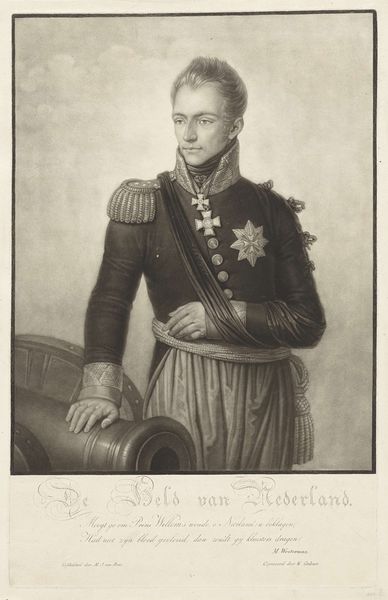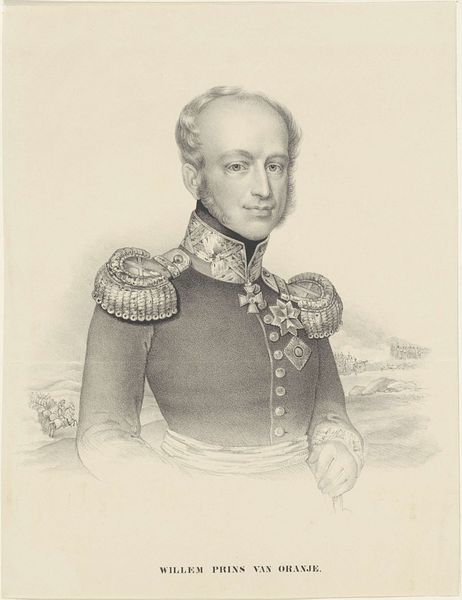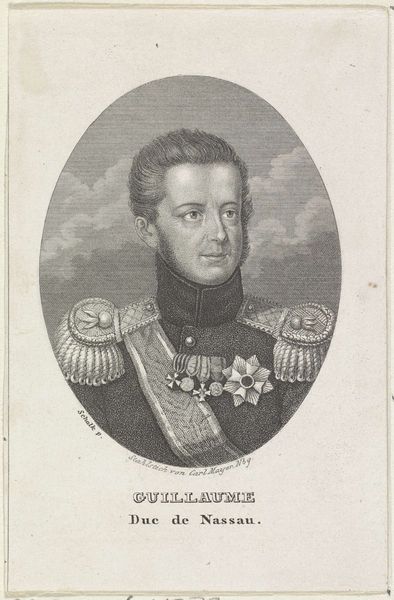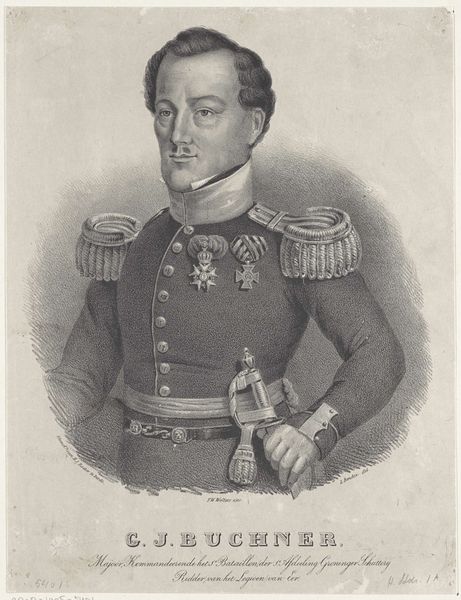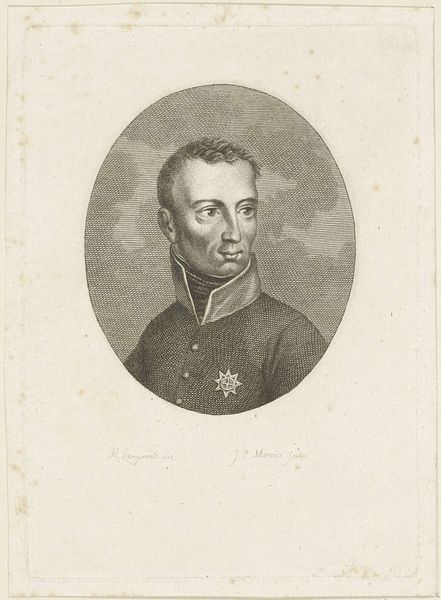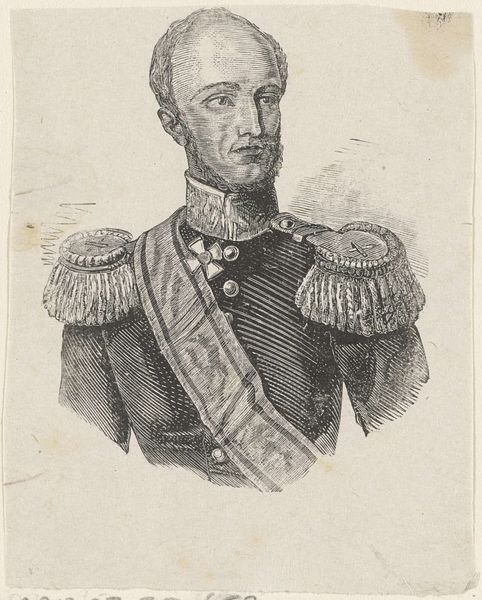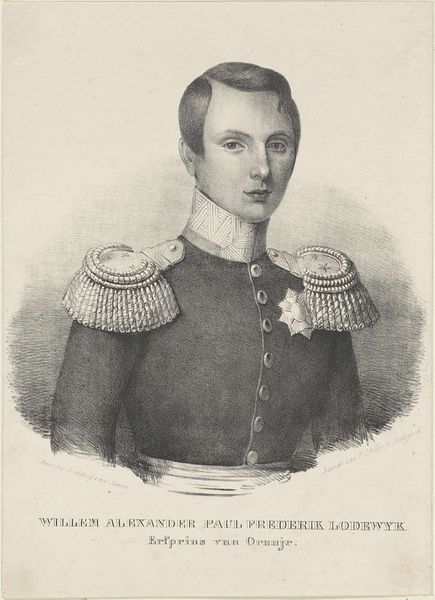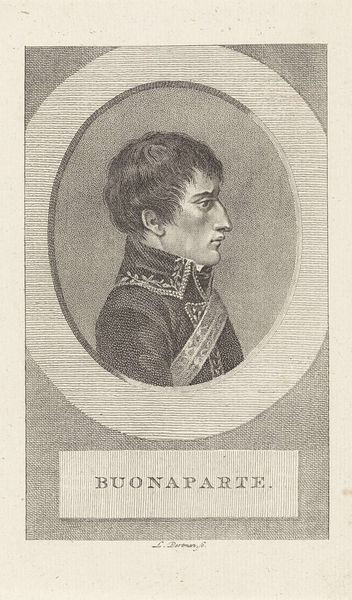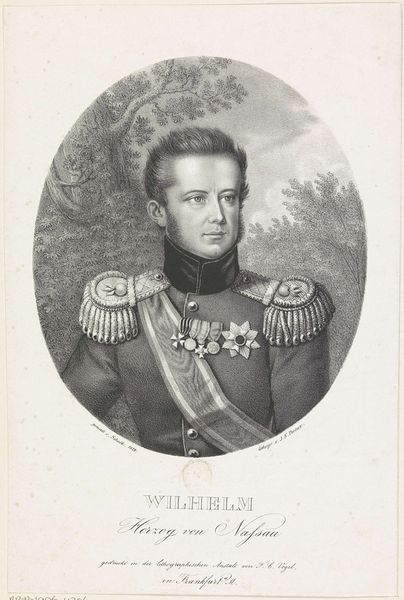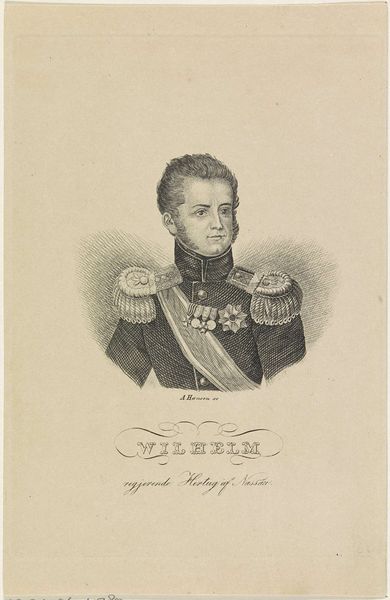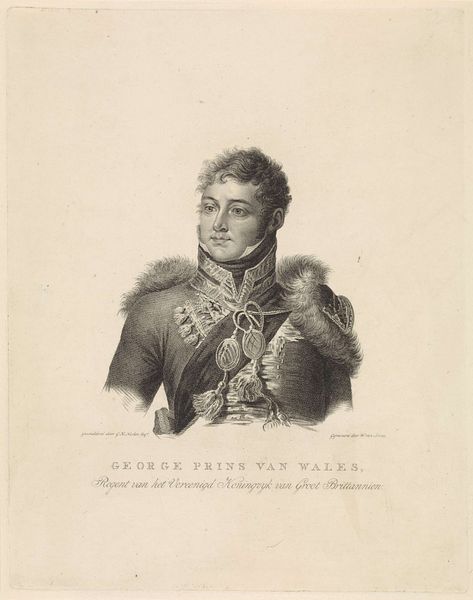
engraving
#
portrait
#
pencil drawn
#
neoclacissism
#
light pencil work
#
pencil sketch
#
old engraving style
#
historical photography
#
19th century
#
pencil work
#
history-painting
#
engraving
Dimensions: height 175 mm, width 110 mm
Copyright: Rijks Museum: Open Domain
Editor: So, here we have "Portret van Willem II, koning der Nederlanden," an engraving from somewhere between 1815 and 1836. The clean lines give it a neoclassical feel. What stands out to you? Curator: The symbols, of course. Note the prominent display of medals and honors. These aren’t mere decorations; they are deliberate signifiers. What do you think they communicate about Willem II’s identity? Editor: Well, I suppose they communicate power, prestige, and maybe some form of sacrifice, given the military attire. But, in such a controlled image, does it feel… genuine? Curator: Authenticity is secondary to the message. Think about what those symbols meant to viewers at the time. The cross and the star he wears would resonate deeply, invoking specific ideas about duty and leadership, not just for the Dutch but also across Europe after Napoleon's defeat. Do you notice anything in the details around his posture? Editor: He is leaning slightly, as if injured… Is that written in Dutch at the bottom about Waterloo? That context gives the image a completely different weight. Curator: Exactly. It isn't simply a portrait; it's a carefully constructed narrative of a hero. These symbols are meant to transcend individual identity and evoke something larger, a shared cultural memory of triumph, resilience, and nationhood. Editor: I see. It's less about *him* and more about what he *represents* to the Netherlands. Thanks. It puts the piece into such a fascinating context. Curator: Indeed. The visual language employed here invites reflection on how societies create and maintain their collective identity through art.
Comments
No comments
Be the first to comment and join the conversation on the ultimate creative platform.
